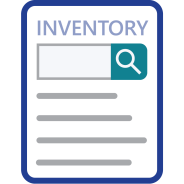
Choose from 5 options:
In accordance with the Charging Framework, stakeholder feedback will be sought on this draft 2023-24 CRIS, which provides information on:
In accordance with the Charging Framework, a Charging Risk Assessment (CRA) has been undertaken that considered the future operating environment, including its:
The overall cost recovery risk rating for 2023-24 is determined to be medium.
These identified key risks and their mitigation strategies are documented in Table 6 below.
Table 6 – Risks and risk mitigation strategies
| Risk | Mitigation Strategy |
|---|---|
| Assumptions made for the new scheme are not reflective of actual regulatory effort or costs | Regulatory effort and costs will continue to be monitored. Assumptions informing the cost model will continue to be replaced by contemporary data as collected. AICIS continues to gather internal effort data. It is expected that the results will be documented in 2024-25 CRIS. |
| Under- or over-recovery through levies due to change in introduction value of industrial chemicals per introducer. | Introduction value monitoring will continue, and levy charges reviewed through the annual CRIS process. |
| Under or over-recovery of fee for service activities due to the low number of applications made under the IC Act 2019. This is especially relevant given the post introduction regulatory focus of the scheme. | Volumes of applications and associate effort will be monitored, and charges will be reviewed through the annual CRIS process. Prices will not be revised in the 2023-24 CRIS due to insufficient data being available to substantiate significant year on year volume variation. |
| AICIS cost base exceeds budgeted position depleting the reserve balance beyond targeted levels. | The impact of any reduced charging on the reserve balance will be monitored to ensure financial sustainability. |